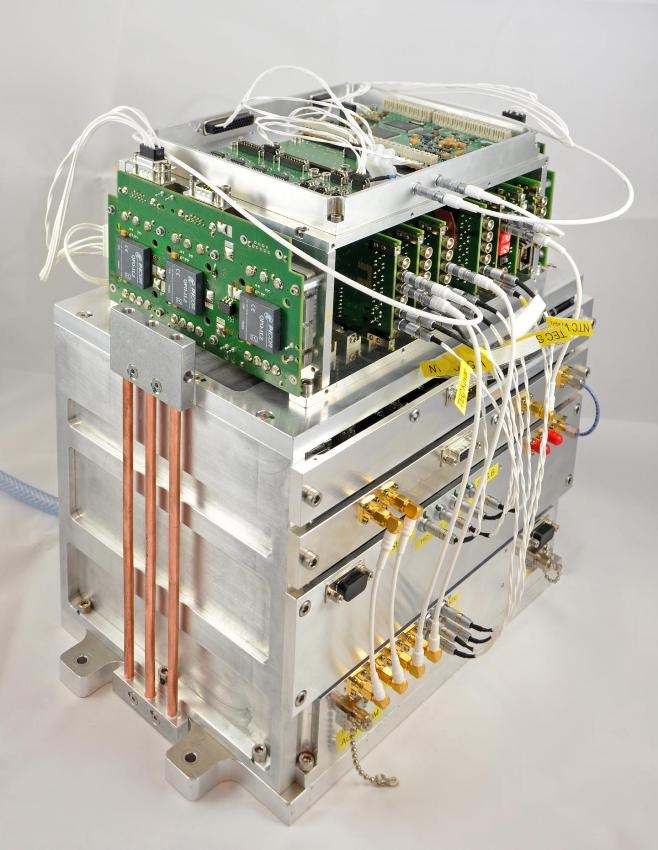May 21 2018
A frequency reference based on molecular iodine was effectively demonstrated in space for the first time, marking an important milestone for laser ranging measurements with the highest precursor and precision for optical satellite navigation systems.
 JOKARUS payload used to demonstrate the first optical frequency standard based on molecular iodine in space. (Image credit: © HU Berlin/Franz Gutsch)
JOKARUS payload used to demonstrate the first optical frequency standard based on molecular iodine in space. (Image credit: © HU Berlin/Franz Gutsch)
Although this sounds somewhat like science fiction, it represents a major step towards laser interferometric distance measurements not only between satellites but also for upcoming global navigation satellite systems that are built on optical technologies. On 13 May, the frequency reference tests were performed on board TEXUS54 - the sounding rocket. A compact laser system, which is the heart of the payload, showed its suitability for space. The system was mainly developed by Humboldt-Universität zu Berlin (HU Berlin) and the Ferdinand-Braun-Institut (FBH).
For the first time, an active optical frequency reference based on molecular iodine was qualified in space in the JOKARUS experiment (German acronym for iodine comb resonator under weightlessness) performed. The results are a cornerstone towards utilizing optical clocks in space. There is a need for such kinds of clocks, among other things, for satellite-based navigation systems that offer data for precise positioning. Optical clocks are also vital for fundamental physics research, for example, the detection of gravitational waves as well as measurements of the Earth’s gravitational field.
The JOKARUS experiment showed the completely automated frequency stabilization of a frequency-doubled 1064 nm ECDL (extended cavity diode laser) on a molecular transition in iodine. The laser system operated fully independently due to built-in algorithms and software. During the same space flight, a frequency measurement with an optical frequency comb in the individual FOKUS II experiment was performed for comparison purposes.
Comprehensive Know-How Behind the Compact Diode Laser System
As part of the Joint Lab Laser Metrology, HU Berlin directed the development and implementation of the JOKARUS payload. Collectively operated by HU Berlin and FBH, the laboratory integrates the expertise of both institutions in the field of diode laser systems for applications in space. The University of Bremen provided a quasi-monolithic spectroscopy module, and Menlo Systems provided the operating electronics.
A micro-integrated ECDL MOPA forms the core of the laser system. The FBH developed and implemented the ECDL MOPA, with a ridge waveguide semiconductor amplifier acting as a power amplifier (PA) and an ECDL serving as a local oscillator (master oscillator, MO). Fully encapsulated in a 125 x 75 x 22.5 mm small package, the 1064 nm diode laser module supplies a 570 mW optical power within the linewidth of the free-running 26 kHz laser (FWHM, 1 ms measurement time).
Using a polarization-maintaining, optical single-mode fiber, the laser light is initially split into two paths, modulated, frequency-doubled, and finally processed for Doppler-free saturation spectroscopy. Funded by the German Aerospace Center (DLR), technology advancements within JOKARUS build on the previous FOKUS, FOKUS reflight, MAIUS, and KALEXUS missions.